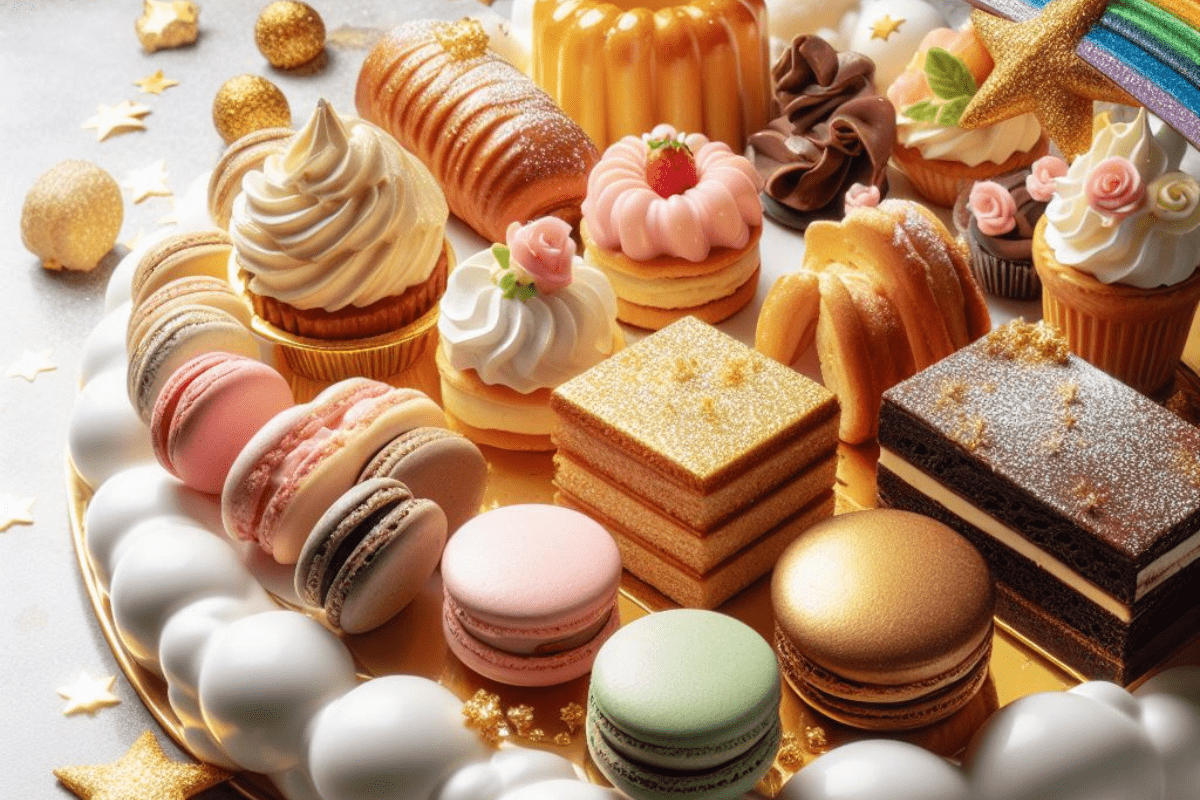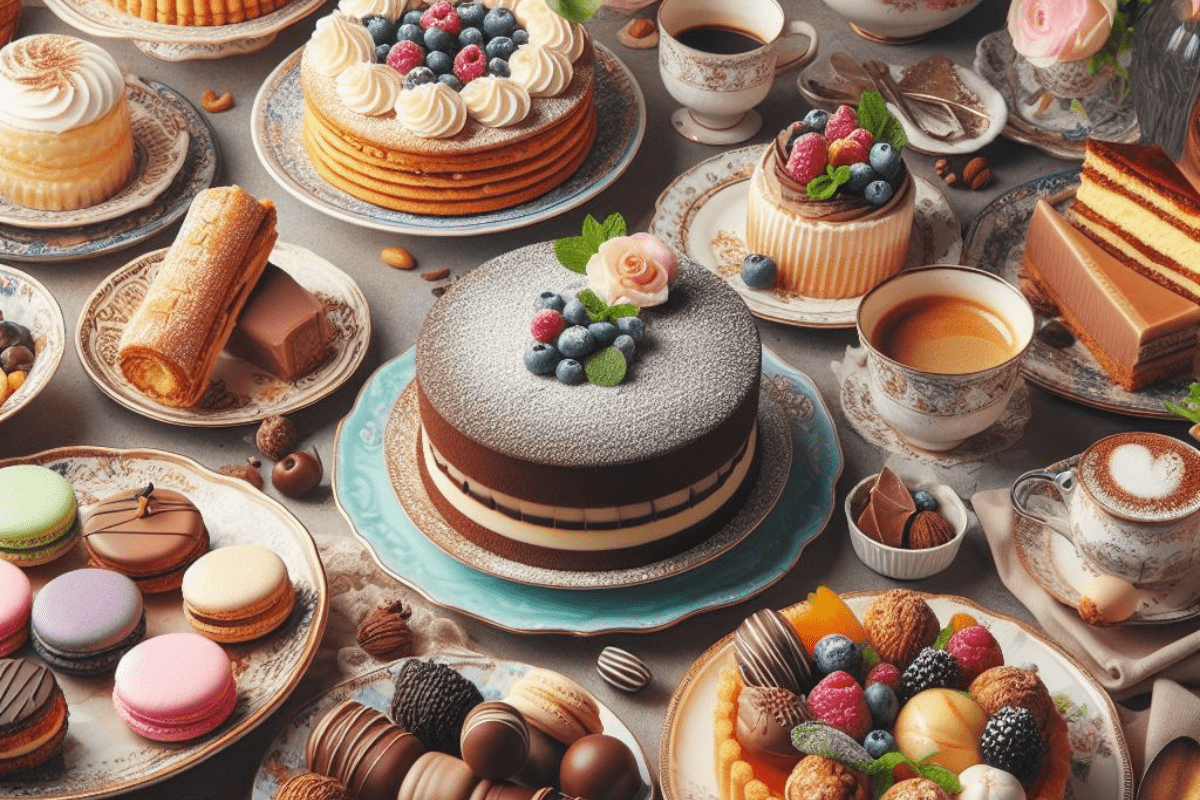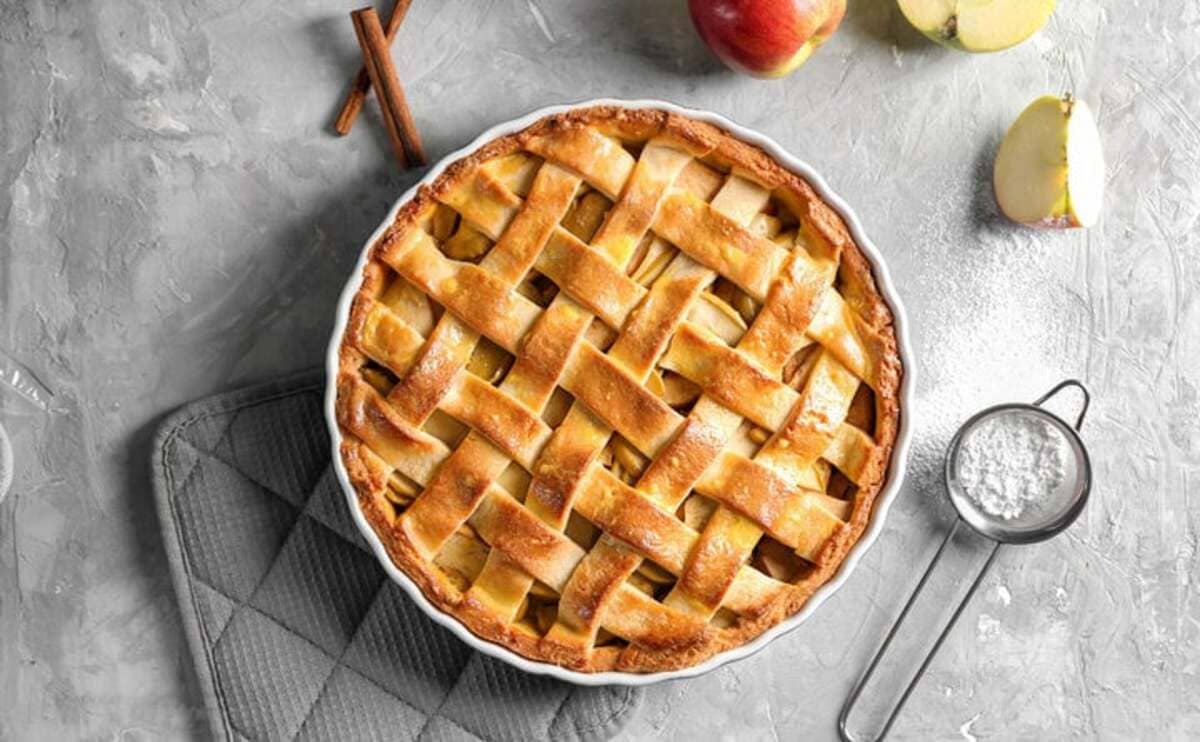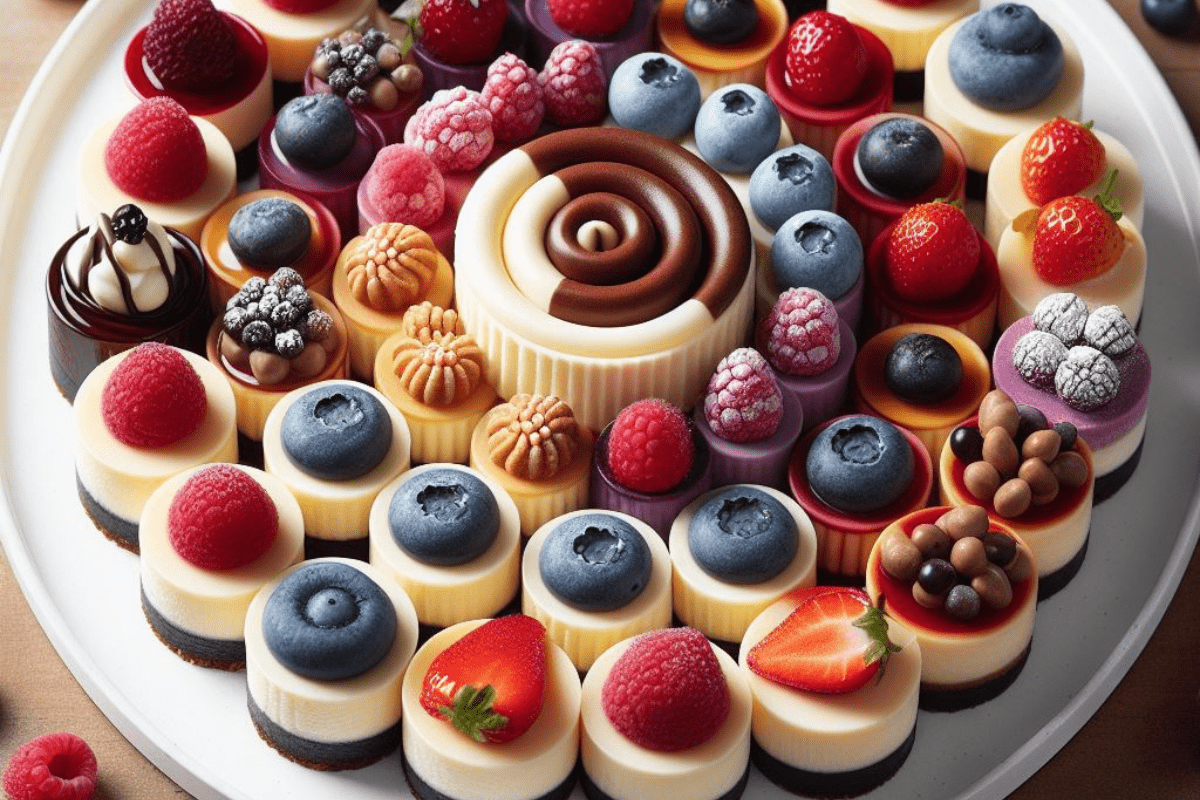Desserts are the ultimate expression of sweetness and pleasure. They are the perfect way to end a meal, celebrate a special occasion, or treat yourself to a moment of indulgence. Desserts can range from simple and light to rich and decadent, from classic and traditional to modern and innovative. In this article, we will explore the world of heavenly desserts, with some tips and recipes from the experts. Whether you are a novice or a master baker, you will learn how to create delicious and impressive desserts that will delight your senses and satisfy your cravings.
What are Heavenly Desserts?
Heavenly desserts are not just ordinary desserts, but rather extraordinary desserts that combine taste, texture, appearance, and aroma. Heavenly desserts are:
- Made with high-quality ingredients, such as sugar, spice, and everything nice. These ingredients provide the flavor, richness, and nutrition of the desserts.
- Prepared with care and skill, using the right techniques, tools, and equipment. These include measuring, mixing, baking, cooling, frosting, decorating, and serving. These techniques ensure the consistency, texture, and presentation of the desserts.
- Enjoyed with appreciation and moderation, using the right utensils, plates, and glasses. These include spoons, forks, knives, napkins, cake stands, pie dishes, and dessert bowls. These utensils enhance the appearance and portion control of the desserts.
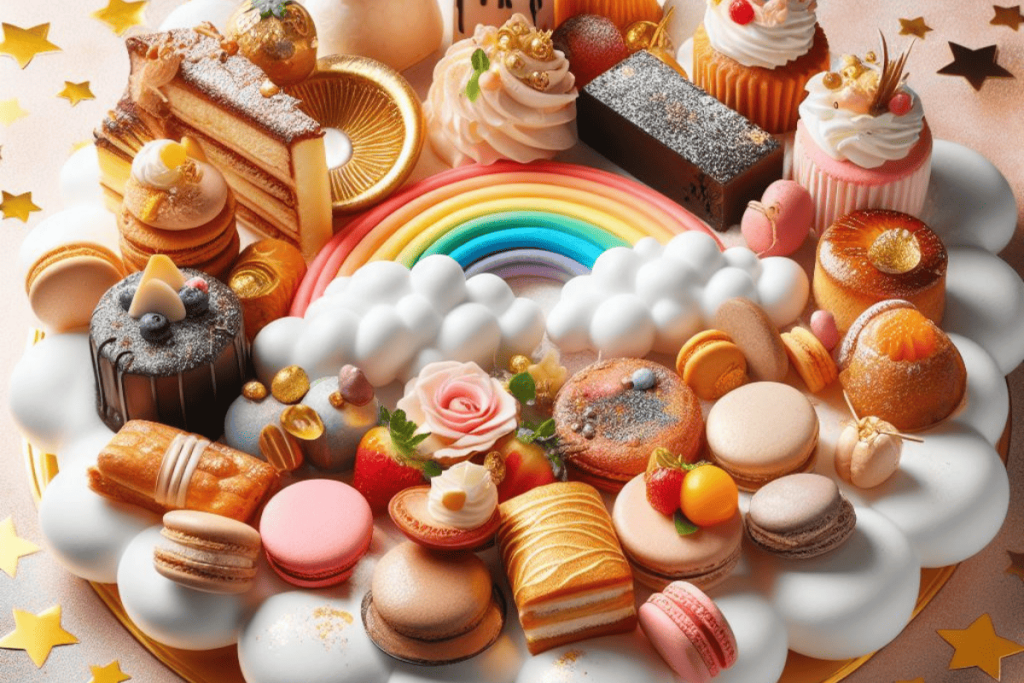
How to Make Heavenly Desserts
Making heavenly desserts is not difficult, but it requires some planning and creativity. Here are the basic steps to follow:
- Choose a dessert recipe that suits your occasion, preference, and skill level. You can use a cookbook, a magazine, a website, or a blog as a source of inspiration. You can also adapt or modify an existing recipe to suit your taste and needs. Some of the most popular dessert categories are:
- Cakes: A sweet and moist baked dessert that can be made with various flavors, fillings, and toppings. Some of the most common types of cakes are angel cake, devil’s food cake, red velvet cake, carrot cake, and cheesecake.
- Pies: A sweet and flaky baked dessert that consists of a crust and a filling. Some of the most common types of pies are apple pie, cherry pie, pumpkin pie, pecan pie, and lemon meringue pie.
- Cookies: A sweet and crunchy baked dessert that can be made with various shapes, sizes, and flavors. Some of the most common types of cookies are chocolate chip cookies, oatmeal raisin cookies, peanut butter cookies, snickerdoodles, and macarons.
- Brownies: A sweet and chewy baked dessert that is made with chocolate, butter, sugar, eggs, and flour. Some of the most common variations of brownies are fudge brownies, blondies, nut brownies, and cream cheese brownies.
- Puddings: A sweet and creamy dessert that can be cooked or chilled, and can be made with various flavors and ingredients. Some of the most common types of puddings are vanilla pudding, chocolate pudding, rice pudding, bread pudding, and custard pudding.
- Gather the ingredients and equipment that you need for your dessert recipe. Make sure that you have enough of each ingredient, and that they are fresh and of good quality. Check the expiration dates, and store them properly. Make sure that you have the right equipment, such as measuring cups, spoons, bowls, pans, mixers, whisks, spatulas, knives, and oven mitts. Check that they are clean and in good condition, and that they fit your recipe’s specifications.
- Follow the instructions of your dessert recipe carefully and precisely. Read the recipe thoroughly before you start, and make sure that you understand each step. Preheat the oven, if needed, and grease or line the pans. Measure the ingredients accurately, and add them in the right order and at the right temperature. Mix, beat, fold, or stir the ingredients gently and evenly, until they are well combined and smooth. Pour, spread, or spoon the batter or dough into the pans, and bake, chill, or freeze them according to the recipe’s directions. Check the doneness of the dessert with a toothpick, a knife, or a thermometer, and let it cool completely before cutting or serving.
- Decorate and serve your heavenly dessert with style and flair. You can use various ingredients and tools to enhance the appearance and flavor of your dessert, such as frosting, whipped cream, glaze, sprinkles, nuts, fruits, chocolate, or caramel. You can also use piping bags, tips, spatulas, knives, or cutters to create different shapes, patterns, and designs. You can also use plates, bowls, glasses, or stands to display your dessert, and add some napkins, forks, spoons, or knives to serve it. You can also add some candles, flowers, or cards to celebrate a special occasion.
The History of Heavenly Desserts
Desserts have a long and fascinating history that spans across different cultures, regions, and times. Here are some of the highlights of the history of heavenly desserts:
- The origin of desserts is still a matter of debate, but some of the earliest evidence of sweet dishes can be traced back to ancient civilizations, such as Egypt, Mesopotamia, India, and China. These civilizations used honey, fruits, nuts, and spices to make various kinds of cakes, pastries, candies, and drinks. They also used milk, cheese, and butter to make creamy and cheesy desserts.
- The word dessert comes from the French word dessertir, which means “to clear the table”. The word dessert was first used in the 17th century, and referred to the sweet course that was served at the end of a meal, after the main dishes and cheese were removed. The word dessert also gave rise to other words, such as dessertspoon, dessertwine, and dessertplate, which are different types of utensils and dishes used for desserts.
- The invention of sugar in the Middle Ages transformed the production and consumption of desserts. Sugar, which originated from India and was brought to Europe by the Arabs, was initially a rare and expensive commodity that was reserved for the wealthy and the elite. However, the discovery of the New World and the cultivation of sugar cane in the Americas made sugar more available and affordable to the masses. Sugar also made desserts more sweet, colorful, and varied, as it allowed for the creation of different kinds of syrups, candies, jams, and preserves.
- The introduction of chocolate to Europe in the 16th century changed the way desserts were eaten and enjoyed. Chocolate, which originated from Mexico and was brought to Europe by the Spanish, was initially consumed as a bitter and spicy drink that was mixed with water, milk, or wine. However, the Europeans soon discovered the culinary potential of chocolate, and started to use it as a base for desserts, such as chocolate bars, truffles, pralines, and bonbons. Chocolate also became a symbol of romance, luxury, and indulgence, and influenced the development of other cuisines, such as French, Swiss, and Belgian.
- The popularity of desserts reached new heights in the 19th and 20th centuries, thanks to the industrial revolution and the mass media. The industrial revolution improved the technology and transportation of food production and distribution, making desserts more accessible and diverse. The mass media, such as cookbooks, magazines, newspapers, radio, television, and the internet, spread the knowledge and awareness of desserts, and inspired new trends and innovations.
Two Sides for Heavenly Desserts
Desserts are a satisfying and complete treat on their own, but they can also be paired with other dishes to create a more balanced and varied menu. Here are two sides that go well with heavenly desserts:
- Coffee: A hot and aromatic drink that can be made with various beans, roasts, and methods. Coffee can enhance the flavor and contrast the sweetness of desserts, and provide a boost of energy and alertness. You can use any kind of coffee, such as espresso, cappuccino, latte, or mocha, and add other ingredients, such as milk, cream, sugar, or spices, for more flavor and texture.
- Wine: A cold and fruity drink that can be made with various grapes, regions, and styles. Wine can complement the flavor and balance the richness of desserts, and provide a relaxing and festive effect. You can use any kind of wine, such as red, white, rosé, or sparkling, and match it with the type and flavor of your dessert, such as sweet, dry, light, or full-bodied.
Conclusion
Desserts are a delicious and versatile treat that can be enjoyed in many different ways. By following some simple tips and recipes, you can explore the world of heavenly desserts, and create delicious and impressive desserts that will impress your guests and satisfy your sweet tooth. You can also experiment with different types of desserts, flavors, and sides, and create your own heavenly desserts. We hope you enjoyed this article, and we would love to hear your feedback and suggestions. Please leave a comment below, and share your heavenly desserts with us. Bon appetit!
